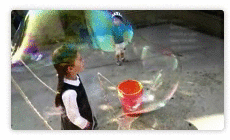

For example, setting to 30 fps: ffmpeg -f image2 -i thumb/001d.jpg -vf scale480x240 -r 30 out.gif. As an output option, duplicate or drop input frames to achieve constant output frame rate fps. If you're aiming to minimize MSE, then that's not too expensive and it's similar to gradient descent. If in doubt use -framerate instead of the input option -r. How can i generate animated gif using the first command but the same. Adjust weights/counts in histogram from quality feedback measured from remapped image. It generates acceptable quality of gif images.This shifts axis-aligned subdivisions to local optimum (I've tried applying that after every subdivision, but it didn't matter - once in postprocessing is enough!)
#Ffmpeg gif to images series#
Voronoi iteration after generating palette (like a final step in LBG quantization). Since we have a series of images the correct input format is image2, not gif (which apparently means an animated gif file, at least to my best guess).The biggest wins I've found (and implemented in libimagequant) were:

The command takes in two arguments: name of the input video - input.mp4. However, Wu's method needs lookup tables for the whole color (hyper)cube, which requires either large (or for RGBA still ridiculous) amount of RAM or reduced precision, and losing bits of input is way worse than having suboptimal division. The command below will convert your video to a GIF and save it in the same folder as the input video: ffmpeg - i input.mp4 output. Wu's method is nice in this case because it exactly measures variance of sets after a split, while median cut just estimates. I've tested median cut that can cut at various angles and variants that cut out spheres, and it didn't make much difference.Ĭhoice of the box to cut and the location where you cut is more important. Aligned subdivisions are not that much of a problem actually.


 0 kommentar(er)
0 kommentar(er)
